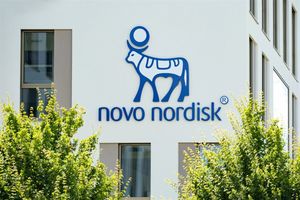
Industrial conglomerate Honeywell (NASDAQ: HON) reported Q1 CY2025 results topping the market’s revenue expectations, with sales up 7.9% year on year to $9.82 billion. On the other hand, the company’s full-year revenue guidance of $40.05 billion at the midpoint came in 0.7% below analysts’ estimates. Its non-GAAP profit of $2.51 per share was 13.6% above analysts’ consensus estimates.
Is now the time to buy HON? Find out in our full research report (it’s free).
Honeywell (HON) Q1 CY2025 Highlights:
- Revenue: $9.82 billion vs analyst estimates of $9.59 billion (7.9% year-on-year growth, 2.5% beat)
- Adjusted EPS: $2.51 vs analyst estimates of $2.21 (13.6% beat)
- Adjusted EBITDA: $2.68 billion vs analyst estimates of $2.39 billion (27.3% margin, 12.1% beat)
- The company reconfirmed its revenue guidance for the full year of $40.05 billion at the midpoint
- Management slightly raised its full-year Adjusted EPS guidance to $10.35 at the midpoint
- Operating Margin: 22.1%, in line with the same quarter last year
- Free Cash Flow Margin: 3.5%, up from 2.4% in the same quarter last year
- Organic Revenue rose 4% year on year (2.7% in the same quarter last year)
- Market Capitalization: $136.9 billion
StockStory’s Take
Honeywell’s first quarter results for 2025 were shaped by stronger-than-anticipated demand across its aerospace and building automation businesses, according to management. CEO Vimal Kapur attributed the quarter’s performance to improved supply chain execution, robust commercial aftermarket activity, and ongoing productivity programs, all despite a challenging macroeconomic environment marked by shifting global trade dynamics and increased tariffs. Kapur noted, “Our book-to-bill remained above one, and we’re seeing resilience across our long-cycle businesses.”
Looking ahead, management’s guidance reflects both optimism about Honeywell’s record backlog and caution due to rising global uncertainty. The company reconfirmed its full-year revenue outlook and slightly raised its adjusted earnings per share target, while emphasizing the impact of tariffs and potential demand softening. Kapur explained that Honeywell’s “local-for-local” manufacturing strategy and operational discipline are intended to offset external pressures, but he acknowledged the company is proactively building contingency into its outlook to account for possible demand fluctuations.
Key Insights from Management’s Remarks
Honeywell’s leadership identified several operational and strategic factors that influenced first-quarter results and set the stage for the company’s near-term focus:
- Aerospace Drives Growth: Aerospace technologies outperformed internal expectations, led by double-digit growth in commercial aftermarket and defense. Management credited ongoing global flight activity and elevated defense spending as key drivers, while acknowledging margin pressure from acquisition integration costs and product mix.
- Building Automation Momentum: The building automation segment delivered its second consecutive quarter of double-digit growth in building solutions and strong gains in building products, with demand particularly robust in the Middle East and North America. New product innovation and a diversified global footprint were highlighted as growth enablers.
- Tariff and Trade Response: The company outlined its approach to mitigating approximately $500 million in tariff exposure, with a mix of selective price increases and productivity improvements. Kapur emphasized that Honeywell’s “local-for-local” manufacturing structure limits exposure to shifting trade flows and helps offset the impact of new duties.
- Portfolio Realignment and Spin-Offs: Honeywell advanced preparations to separate into three standalone public companies focused on automation, aerospace, and advanced materials. Leadership transitions were announced to support this process, including a new General Counsel and dedicated teams for spin execution.
- Targeted M&A and Divestitures: The acquisition of Sundyne and the planned sale of the personal protective equipment (PPE) business were highlighted as steps to sharpen Honeywell’s portfolio, with management noting that recent acquisitions have performed ahead of expectations and that divestitures will support margin and growth profiles.
Drivers of Future Performance
Management’s outlook for the rest of the year centers on navigating global economic uncertainty, offsetting tariff impacts, and executing on portfolio transformation, while relying on backlog strength and operational resilience for stability.
- Tariff Mitigation and Pricing Actions: Honeywell aims to offset new tariff costs through a combination of pricing initiatives and supply chain productivity, with management indicating confidence that these measures can neutralize the $500 million tariff exposure by year-end.
- Separation Execution: The successful spin-off of Honeywell’s automation, aerospace, and advanced materials businesses is expected to unlock value and improve strategic focus, but also carries execution risks related to timing, regulatory approvals, and stranded costs.
- Short-Cycle Demand Sensitivity: The company’s guidance incorporates contingency for potential demand weakness, particularly in short-cycle businesses such as industrial automation and retail-exposed segments. Management noted that visibility remains higher for long-cycle businesses, while short-cycle areas are being monitored for signs of softening.
Top Analyst Questions
- Nigel Coe (Wolfe Research): Asked about the company’s ability to offset $500 million in tariff exposure and whether mitigation would be achieved before year-end. Management stated that pricing and supply chain productivity would neutralize the impact, likely by the second half.
- Steve Tusa (J.P. Morgan): Requested details on tariff exposure by segment and geographic source. Management clarified that industrial automation and aerospace are most affected, with about 60-70% of tariff exposure linked to China.
- Julian Mitchell (Barclays): Inquired about margin dynamics in industrial automation and whether first-quarter contraction would persist. Management attributed margin pressure to one-time receivables write-offs and expected improvement as the PPE divestiture progresses.
- Andrew Obin (Bank of America): Sought insight into aerospace original equipment (OE) and aftermarket trends, asking if destocking was underway. Management explained that product mix and revenue recognition timing affected OE results, while aftermarket demand and backlog remained strong.
- Chris Snyder (Morgan Stanley): Asked about the rationale for not expanding further into discrete automation and whether future M&A could change that. Management said future acquisitions would focus on high-growth verticals rather than specific automation segments.
Catalysts in Upcoming Quarters
Looking ahead, the StockStory team will track (1) progress on Honeywell’s planned spin-offs and related leadership transitions, (2) the effectiveness of pricing and productivity initiatives in fully offsetting tariff and trade headwinds, and (3) order trends in short-cycle businesses, especially industrial automation and building automation, for early signs of demand softening or resilience. The pace of M&A integration and divestiture execution will also be important indicators for future performance.
Honeywell currently trades at a forward P/E ratio of 20.1×. In the wake of earnings, is it a buy or sell? The answer lies in our free research report.
Stocks That Trumped Tariffs in 2018
Market indices reached historic highs following Donald Trump’s presidential victory in November 2024, but the outlook for 2025 is clouded by new trade policies that could impact business confidence and growth.
While this has caused many investors to adopt a "fearful" wait-and-see approach, we’re leaning into our best ideas that can grow regardless of the political or macroeconomic climate. Take advantage of Mr. Market by checking out our Top 9 Market-Beating Stocks. This is a curated list of our High Quality stocks that have generated a market-beating return of 176% over the last five years.
Stocks that made our list in 2020 include now familiar names such as Nvidia (+1,545% between March 2020 and March 2025) as well as under-the-radar businesses like the once-small-cap company Exlservice (+354% five-year return). Find your next big winner with StockStory today.





